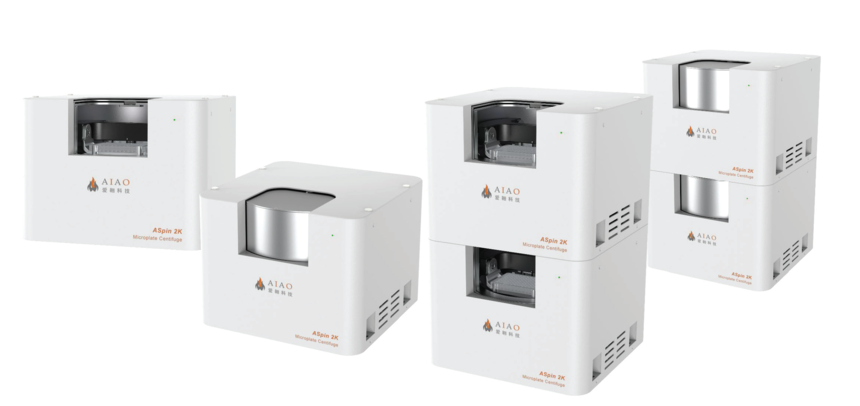|
ASpin 2K Automated Centrifuge
Collect
The ASpin 2K Automated Centrifuge is a microplate centrifuge that can be integrated into a laboratory automation system, combining the advantages of silence, stability, compactness and low maintenance costs, making it the best choice for research in automated experimental processes. The ASpin 2K is extremely well integrated, featuring a double-directional door opening (front top and front side) to allow third-party robot arm to accurately place microplates into the centrifuge for high-throughput, automated centrifugation operations. In addition, the ASpin 2K is designed to be unbalance resistant, so that if the instrument vibrates due to an unbalance, the instrument automatically senses it and stops the centrifugation. The ASpin 2K has excellent acceleration and deceleration performance, which can greatly shorten the cycle time. The ASpin 2K is very excellent in plate centrifuge, nucleic acid and protein purification, sample de-bubbling, and cell separation and purification. to The ASpin 2K centrifuge can be stacked, using fixed parts to securely combine the two units to save limited space in the automated integration system, making the system more compact, and finnally improving the lab efficiency.
Specification: 1. Maximum speed: 4200rpm; 2. Maximum relative centrifugal force: 2000g; 3. Centrifuge method: horizontal rotor centrifugation; 4. Adaptable plate types: ELISA assay plate, 1.5ml deep well plate, 2ml deep well plate, and other 128mm (long) plates with a height ≤ 60mm × 85mm (wide) container (all 96, 384, 1536 well microplates, PCR microplates, centrifuge tube racks that comply with ANSI standards) 5. Number of centrifuge plates simultaneously: 2; 6. Location: automatically locate the two centrifugal plate positions A and B; 7. Computer control: The PC program can set the centrifugal program, acceleration, speed, and centrifugal duration; Application: 1. The filtration process of nucleic acid and protein purification; 2. Collection and concentration of bacterial cells; 3. Concentration of biological macromolecules; 4. Removal of liquid bubbles inside the liquid; 5. Synthetic biological process reactions; 6. PCR set up; 7. Separation of blood components; |








